Teaching Belly Dance: Making Corrections
6/14/2016
Updated 12/13/16
First lets start with a little truth: a correction is only worth mentioning, if the improvement can be made. When faced with a total beginner, who has been asked to perform a figure 8, the teacher will see dozens of problems:
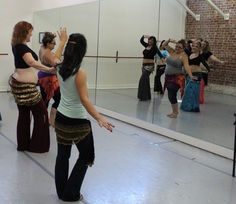 This list could go on and on, but if the teacher points each of these issues out to the beginner student, he or she will become overwhelmed and unable to make any improvements. Instead the teacher must take her time and improve the dancers movements one step at a time. Where to start ? Firstly, make sure you have talked to each student about their existing fitness and injuries. If they have a problem with any part of their body, be sure to encourage safe posture in that area first. Cover posture at the start of every lesson, and focus your initial corrections on postural problems. If their whole posture is off, and they don't complain of a particular issue, I tend to start with hips, back and shoulders. Make it your mission in life to observe posture. Watch people walk, stand, sit and dance. Look for clues to pain, such as favoring one leg, or a dip of the shoulders. Understand how our muscles and skeleton work together to make belly dance movements. When observing your students, first look at them from a distance, watch their whole body movements. Then walk closer to them, so you can see the mechanics in action and observe the root of problems. I like to offer up personal corrections only when I am standing close enough that the other students can not hear. Usually I will set up an exercise and then walk the room, observing and critiquing each dancer in turn. One correction per exercise is usually enough, unless their posture is particularly bad. I use the "critique sandwich" technique: that is I place my correction between two positive statements, such as: "I see you have been practicing! Watch that you don't roll onto the outside of your right foot, keep your weight centered and strong. Your arms are looking much better this week." This kind of correction is easy for the dancer to focus on and usually the correction can be made within a few moments. If you feel that your whole group has a problem, or that an issue needs to be addressed, wait until after the exercise and aim your critique at the whole group, like this: "I noticed that lots of you were having trouble with the weight shift. Make sure that you are passing your weight through your center, and only pushing out as far as you are comfortable. If you feel like your weight is on the outer edge of your foot, or if you start to feel pressure in your ankles, shrink your hip move, so that it is putting less strain on your lower body."
While you shouldn't under estimate your students, it is also worth remembering that some of them will be unable to perform some moves that you can do. Give your students achievable goals and cheer them on to the finish line. Most belly dance students come to class for fun, and while corrections are not a whole lot of fun, improving is the best feeling in the world. Make sure every correction is a step forward that they can take towards being a better dancer. Gradual, achievable corrections, given regularly and mixed in with praise, will help your students improve their dance skills and make your job as a belly dance teacher so much easie
If you like this blog, go back to the blog page, for others you might like including: Or check out these Hub Blogs including: "Your First Belly Dance Workshop" The Top Ten Belly Dance Tunes for Performance" "Finding a Great Belly Dance Teacher"
0 Comments
Being Part of the Solution
5/16/2016
Updated 4/22/19  Lets start with a little bit of negativity for a change : belly dancers moan. They moan about the lack of good teachers, the lack of good students, about gigs, no gigs, cheap gigs, they moan about changing rooms, running orders, costume prices, musicians and dirty floors. I am pretty sure its not a belly dancer thing - everyone moans. I bet the butcher, the baker and the candlestick maker all do just as much moaning. Belly dancers want to see better belly dance, done to a professional level at professional venues for professional pay - but most don't know how to make that dream a reality. We have some other issues in the belly dance "industry" that we struggle to deal with that increase the problem:
 When I first heard about the Belly Dance Business Academy I saw a parallel in our aims. The BDBA wants to provide tools for those in the business of belly dance to help them make the most of their skills and talents. They want to take the best practice and share it with others, provide motivation, support and practical advice to help teachers, event organizers and touring artists. I was hugely honored to be asked to join their teaching team. The first class I produced for them is already live ' Event Hosts: Setting up expectations of changing room ethics" - its a free class and includes the flyer that I put up at events to explain the "rules" that I expect. Something as simple as putting up changing room rules can help prevent event drama and elevate the standards of expected behavior in a community. I see The Belly Dance Business Academy as the perfect way for me to reach a wider world of belly dancers and continue with my passion - helping others to enjoy belly dance ! Finally, here are a few ideas on how to be a positive force in the belly dance industry:
Thank you for listening to my "moan". With a little positivity and a whole lot of working together we can enjoy watching our industry continue to go from strength to strength. Full disclosure - since writing this blog post Sara has become a co-owner of the Belly Dance Business Academy.  If you like this blog, go back to the blog page, for others you might like including:
Being Part of the Solution I'm Perfect for Belly Dance (and so are you) Sara Shrapnell is a belly dance writer, teacher and performer. She has taught more than 5,000 belly dance classes, both in the UK and US. She now teaches in Pleasanton, Dublin and Livermore in the SF bay area, as well as workshops world wide and on-line via the Belly Dance Business Academy. Her classes are known for their humor, detailed breakdowns and cultural context. Students who have studied with Sara have gone on to teach and perform in all styles of belly dance and many have made their living through performance or teaching. Sara has written two books: “Teaching Belly Dance” "Becoming a Belly Dancer: From Student to Stage", co- written with Dawn Devine, Alisha Westerfeld and Poppy Maya. Both are available through Amazon. Are You Ready to Teach Belly Dance ?
4/25/2016
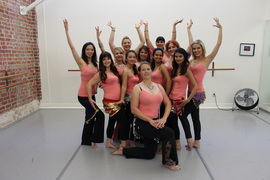 In my book “Teaching Belly Dance” I gathered a huge selection of advice for the new belly dance teacher. The first question for the advanced student, the team leader, or budding workshop host who wants to move into teaching is "am I ready". Many of us fall into teaching - perhaps when our own teacher moves away or needs someone to cover her classes during a vacation. Maybe you have moved to a new area where no one teaches your style of belly dance, or maybe you want to make enough money to cover your own belly dance expenses. Whatever your motivation, here is a check list to help you make sure that you are ready to teach belly dance. How good are your basic skills ? Its time to take a critical look at your own skill set and abilities. Often in our rush to learn “new” moves we forget to focus on our basics. Assess your hip rotations, hip lifts and drops and your shimmies. Are they perfect every single time? or have you developed bad habits? Take a private lesson with a teacher you respect and work on the moves you plan to teach, to make sure that you don’t pass on any bad technique to your new students. Can you teach to all the learning styles? Teachers often teach towards the learning style that suits them best, after all that is how they learn. Your students will have a mix of learning styles, and each individual deserves the same opportunity to learn. Make sure you can teach the basic moves to the visual learner, the audio learner, the verbal learner, the logical learner, the physical learner and the emotional learner. Remember that most of us learn with a mix of styles and those styles can change week to week and depending on the move we are being taught. Teach to all learning styles, even if you are sure that your students favor one or two. Do you understand the importance of a good warm up and cool down? Don’t just repeat the warm up that your teacher does, but take time to understand its role in a class and how to for-fill the needs of your students. Put your students safety first and learn good practice, so that you can adapt your warm up and cool down to suit your dancers, the room temperature and the content of the class. Do you have enough material to teach a semester (term)? Think about how you can make the 12th class just as much fun as the first by allocating your material throughout the semester. Start by making a list of all the moves, concepts and ideas you want to teach and splitting them between the number of lessons you plan to teach. This will form the basis of your semester plan. Your lesson plans will develop out of your semester plan. Do you have a good selection of music to keep the students interested? Its time to catalog your music collection and purchase new music to fill any gaps. How is your fitness? Talking and dancing may be a new skill for you. Make sure you can complete your own warm up and still talk immediately afterwards. Do you have insurance? This is essential. You will need public liability and to check that your venue has building insurance. If you intend to host workshops or put on shows then you will need further insurance to cover those activities. In some areas you also need a business license and to register for tax before you can take any money. Check with your local small business organization for clarity. Have you picked the right venue? is it warm and inviting? Does it have a good floor? is it handy for a car park or public transport? Can you afford the rent? is it available at the right time of day to suit your students? Will you have enough students? In the early days most businesses struggle and you will probably need another form of income for at least two or three years. For every person who emails you or signs up on Facebook to your classes, assume that half will attend the first lesson and only 1/4 will still be there at the end of the course. You can find new students though flyers, postcards in coffee shops and with on line advertising, but your students will be your best promoters, so make them part of your sales team; offer them a free class if they bring a friend and give them flyers to pass out or pin on their fridge. 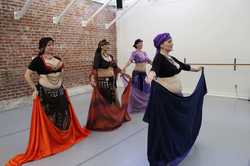 Finally – Do you love belly dance enough to go out every night in the cold and the rain? Can you teach a figure 8 100 times this year and still make it sound fresh and fun? Can you stand back and let the dancers repeat a basic move for five more minutes when you really want to move on to something more exciting? Can you spend all your earnings on ten veils you will never use, so that your students can learn a floaty choreography ? Are you a people person? Are you the right person to be training the next generation of belly dancers? If so you have taken the first steps towards a wonderful new career. I wish you lots of happy years, filled with exciting (and profitable) belly dance classes! Teaching Belly Dance – The book about setting up, planning, teaching and enjoying belly dance classes is available on Amazon If you need help with lesson planning, Sara has a new book called "52 Lesson Plans and how to write 5,000 more". It includes a full year of lesson plans that you can teach "as is", and instructions on how to develop your own lesson plans. For marketing advice, check out the 4 part video workshop "Starting, re-starting and Kickstarting your belly dance classes" If you like this blog, go back to my blog page, for others you might like including: Or check out my Hub Blogs including:
"Your First Belly Dance Workshop" The Top Ten Belly Dance Tunes for Performance" "Finding a Great Belly Dance Teacher" Sara Shrapnell is a belly dance writer, teacher and performer. She has taught more than 4,000 belly dance classes, both in the UK and US. She now teaches in Pleasanton, Dublin and Livermore in the SF bay area, as well as workshops world wide. Her classes are known for their humor, detailed breakdowns and cultural context. Students who have studied with Sara have gone on to teach and perform in all styles of belly dance and many have made their living through performance or teaching. Sara’s first book “Teaching Belly Dance” was published in 2014. "Becoming a Belly Dancer: From Student to Stage", the stagecraft handbook co- written with Dawn Devine, Alisha Westerfeld and Poppy Maya, is also available on Amazon. Much as I wanted to include the following in my book “Teaching Belly Dance”, I know that Facebook moves and evolves its policies almost weekly. The information here is based on my understanding of Facebook in 2014.
When I joined Facebook in 2005 it had a nice, simple idea : Post stuff on your wall that your friends would like to see, see what they are posting in return. It was pretty, smart, easy to use and a good step up from Tribe, Bhuz and the MED list. Here was a new way to communicate and connect with Belly Dancers from around the world. Little did I know.... Facebook is now my top means of communication with the outside world. With the mobile app I can check my feed at least once an hour and keep track of thousands of friends I have never met. When I attend belly dance events I post first to make connections, so even though I have moved around the world, I can meet up with familiar faces. When I want to buy or sell a costume, I go to Facebook first. If I want to send a message to my students I put it on Facebook and when I want to advertise an event…. Facebook is my first port of call. Of course not everyone is as addicted as me, and we are seeing a split in the world of belly dance between those in the know (on Facebook) and those who avoid sharing their every moment with a faceless corporation with limited ethics. I want to plead the case for using Facebook to promote ideas, raise your profile and get bums on seats at your events. Please excuse me if I start with the basics : The first thing I am going to suggest is that you separate out your “family” Facebook and your “belly dance” Facebook. Using Facebook to advertise to belly dancers will be boring for your non dancer friends. Split them up. For a while Facebook worked on circles and groups, but that never worked. Have two Facebook pages, or three or four. Yes it breaks the rules, but it’s a small rebellion. You may choose to have a “fan page” instead, but I find that people prefer to be your “friend” than your “fan”. Maybe I’m just not famous enough :) Next you need to get followers. This takes work, is boring, but it has to be done. Find a friend and look on her friends list for anyone else you know. Repeat. Hopefully people will notice you and send you friend requests too. Its up to you who you accept, but I have rules :
And here we start to see the problem with advertising events on Facebook. Nine years ago most of us had 100 friends, posted twice a day and could keep up with each others news. Now I have over 1,000 and I limit my friend list. Many others have ten times that split between different accounts. In order not to bring the facebook universe to a grinding hault Facebook decided to limit your feed to your top friends, and you didn’t get a say in who those people are. Let me say that again: "You don’t get to decide whose posts you see or who sees yours." If for example you wanted to post “Informal Hafla at mine right now, bring a bottle”, some estimates say that 30% of your friends will see that post over the next few days. Not too bad, but that 30% might all be three hours plus away from where you live, while the belly dancer across town who is bored tonight will never see that post. You can influence what you see on your own feed by “liking” posts from the people you want to hear more from. If you like or comment on your class mates baby photos, Facebook will make sure you see the second batch. It therefore follows that if you want more people to see your posts you need to encourage them to “like” or comment on your posts. Some people come right out and ask and that is why you see these kinds of weird fishing posts :
These posts are all about collecting people who will see your next post. There are companies who set up Facebook pages like “Kittens are the best”, fish for highly interactive friends by posting kitten pictures then sell the page on to a company (lets say a Onesie company). A few weeks later they change the name of that page. Suddenly you find that you like “Adult Onesies are the best”, they are filling up your feed with adverts and all your friends are laughing at you. That’s a silly example, but beware, that’s how you get unexpected porn show up in your feed. As a belly dancer you may want to fish for more likes and comments to help promote events you are working on. For example your friends may all like a new video of Rachel Brice that you share, or a photo of you in your new costume. Likes cause more likes. If Facebook sees that most of the 30% of friends they showed your post to liked it, they assume it is important and show it to more. If they also like it, then your message will spread. If your next post is about your event, Facebook sees you as an important person and sends your new post out to more of the folks on your friends list. However if you post the same thing or something simiar, Facebook will limit its access to your followers who don’t want to see the same posts time and again. This is a huge problem for us if we are promoting an event. Say you posted this ;
Let us assume that 30% of your followers saw it. Three people clicked like. If you post it again, word for word, the next day it will only get seen by perhaps 10% of your followers and some of those will over lap. This second post has no hope of reaching your prime market. You feel like you sent it out to everyone on Facebook (twice !), where in reality just a few dozen saw it. We need to do more. The first thing you can do is set up an event on Facebook and invite people. Facebook prefers to send people to its own pages over outside web pages. Put everything on the events page that you would on a web page and post something slightly different to your wall : (See how I'm fishing for comments and clicks !) With an event page you have the chance to invite people directly. I suggest you start a “hit list”. As you connect with people on Facebook make a note of who they are, where they live and how you intend to market to them. It is no different to keeping an address book. I have a list of people who live within an hour of me, who I invite to events I organize. My second list is of people who have shown an interest in starting classes, and I send them an event invite each time a new course starts up. My final list is of people who may host a workshop with me when I travel. For a local event I am going to invite everyone on that first hit list. Event invites go straight to notifications and have a higher chance of being seen. However, so many people send out blanket invites (to everyone on their friends list) that many of us skip over those notifications assuming that they are out of area. Please don’t do this – it spoils the effect for the rest of us ! It also helps if the name of your event includes a location :
The next way you can enhance the views of posts about your event is to tag people. Tagging promotes your post with both your friends and the friends of the person you tag. For example, before I taught in Bristol last month I tagged the host, Sasha, in many of my posts:
Her students and other dancers in the Bristol area where more likely to see that post because she was tagged in it, and it may have helped bookings. It also helps promote her as a community leader and workshop host. She did a great job, and I want other people to know that. Some people are very open to the idea of tagging each other in posts, but limit it to people you are working with on a project. You can’t just tag the most famous belly dancer you know and expect her friends to like you too. Have you seen the posts where a costume designers puts up pictures of new costumes and tags every belly dancer in the universe? You don’t have to help promote their work if you don’t want to. However you should be open to helping out friends by using the tag option. Adjust your setting so that you have to approve any tags others might put on photos or posts. That way you can control how your name is being used, while still promoting events and products you support. Please feel free to share, tag me and comment on any posts about this blog, or about my book ! If you interact with my post it will reach more of my fiends and maybe some of yours might like to know more about me :) Personally I am a big fan of advertising on Facebook. Adverts appear in the main body or side bar of the feed of the people you target. The great thing with Facebook ads is the targeting. For example, before a new semester in Pleasanton I advertise to women over 20 who live in Pleasanton, like dance and are not already connected to me. Over this weekend I advertised to people in the UK,USA, Canada and Noway who like belly dance. That advert helped me find 40 people who liked my book, and 4 people bought it. It cost me $5. I think that is money well spent. Facebook users say they hate adverts, but I think many are more interested in seeing targeted ads. Be honest - you clicked that advert with the pretty yoga pants.... Make sure that all your promotional work links back to one place (most likely your main web site) and remember that people hate to click more than once. If you are promoting an event make sure that when they click on your post or advert they get to a place with all the information they could possibley want. Finally remember to work as part of a community. By sharing other peoples events you help that event information reach more people and position yourself as a “gatekeeper” informing other belly dancers of what is happening. Gatekeepers get more attention and are more customer friendly than those that fish. Your increased popularity in turn increases interest in you, your events and those whose information you share. The more of a community we can build the faster we can get information to people who want it. Post often but keep it fresh and mix up your topics, providing new information and topical news in amoungst your continued promotion of yourself and your events. Too little and you wont be heard, too much and you turn your market against you. Here are my top tips for marketing your event at belly dancers via Facebook: 1, Set up a web page with all the information laid out clearly 2, Set up an event and invite your “hit list” to attend. Make the location clear. 3, Post your event on your wall every few days. Say the same thing with different words, add pictures and make each post new and different. Dont always include the same web site link in the main text:
4, Fish for likes and comments:
5, Advertise on Facebook but target your ads at your prime customers. 6, Ask your friends to share your post. Share other peoples posts. 7, Tag your friends (but ask them first):
8, Don’t limit your focus on Facebook – make a web site, email the local teachers, send out flyers and talk to people over the phone. Good luck with your event, and feel free to share this post, tag me, and buy my book !! http://www.amazon.com/Teaching-Belly-Dance-Sara-Shrapnell/dp/0615980848/ref=sr_1_1?ie=UTF8&qid=1395867094&sr=8-1&keywords=teaching+belly+dance . |
AuthorCategories
All
Archives
March 2023
RSS feed works with feedly.com or theoldreader.com
|
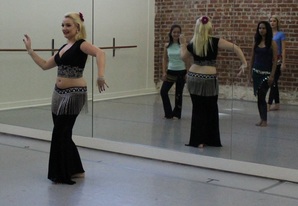
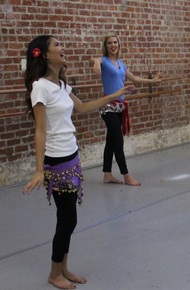
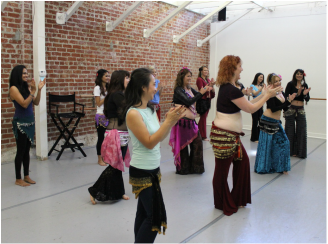

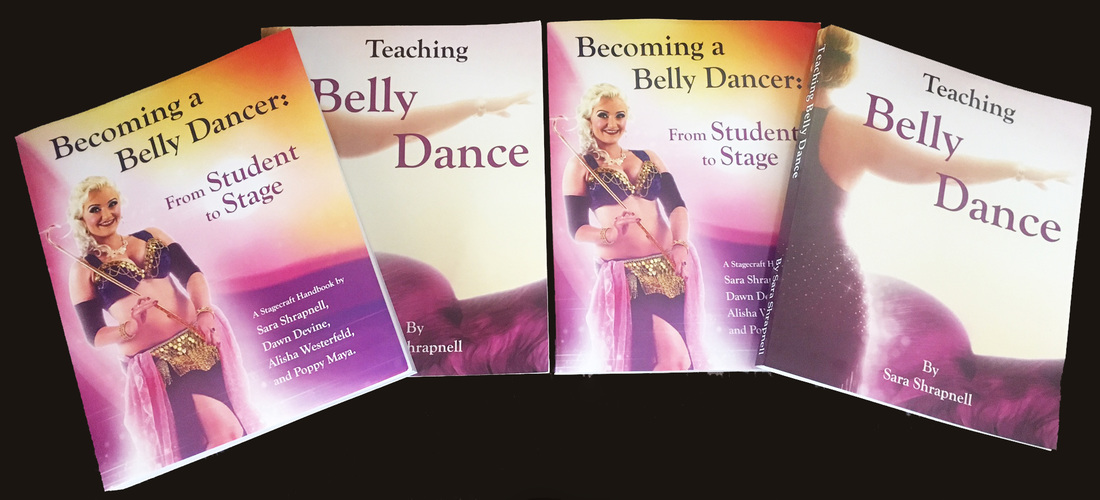
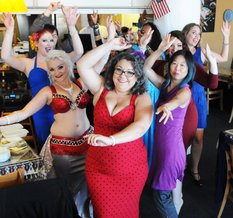

 RSS Feed
RSS Feed